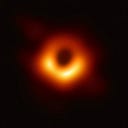Modern & Contemporary Art for Beginners: #02 — What To Do With Modern Art & The Loss of a Skilled Artist?
It’s not just you who don’t understand almost all works of art from Modern and Contemporary in the Museum. For a very long time, art was very well known as a discipline that required talent, time and patience to create an object that was aesthetically pleasing and beautiful to see and that the brain could process subtly. How and what information can I do to better understand all this chaos? Here are some key points for understanding modern and contemporary art and the artists behind it.
1. The majority of Modern and Contemporary artists have extraordinary artistic technical skills, but that is not the significance value of being an artist today.
If you study the biographies of Modern and Contemporary artists, you will understand that the majority of them were born with extraordinary technical skills and many of them graduated from art schools where they learn fine art, art history and of course various techniques and art-making skills. If you mean super realistic painting, objective painting with a high level of accuracy or a sculpting technique like Michelangelo, many people have it even those who are not professional artists have artistic hobbies with these abilities. The key fact is that artists no longer try to repeat the same process over and over again, but instead they try to create variations with other skill approaches wether is research on ideology, ways of channeling thoughts towards objects, experiments on new materials, radical thoughts and experiments.
2. The invention of photography plays an important role in the development of Modern and Contemporary Art.
Classical art in the renaissance period was marked by portraits of important people or portraits of nature and life, the majority of works of art at this time were realism. The ideology of art, especially painting at that time, was greatly influenced by the ideology of capturing and freezing an object against a time capsule. In the industrial revolution, since the invention of photography and the spread of commercial photography, artists tried hard to rethink what to do about this. Instead of rejecting photography as a field of art, the artists tried to find other ways to create their own uniqueness and tried to create works of art that looked unrealistic as the boundary lines of a new period. For this reason, Modern and Contemporary Art no longer focus on efforts to describe and capture reality, but instead create the style world of forms that are not directly related to real objects, change their forms to become unreal, explore and express themselves in an unlimited personal style.
3. In many cases, the artwork itself is not the main spotlight. The physical object of the artwork is only a concrete visualization, while the value of the art lies in the background of the idea and the context.
In another sense, Modern and Contemporary art require more action to enjoy and understand it, that is, the audience is invited to learn why the artwork was made. Of course, classical painting also needs context, but in many ways we can concretely understand that it is a portrait of a woman or it is a mountain view. Modern and Contemporary Art in many ways invites the audience to learn deeper about the ideology and physiology of the artwork. This is for a better reason, where works of art become a medium for ideological communication, which when captured in the right way, can communicate their ideas more regularly and specifically to the people who enjoy them. Take for example the works of Félix González-Torres, you will only be able to understand the art if you really study the reasons behind why the artwork was made and not the thought that “everyone can make it.”
